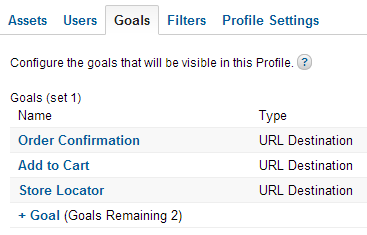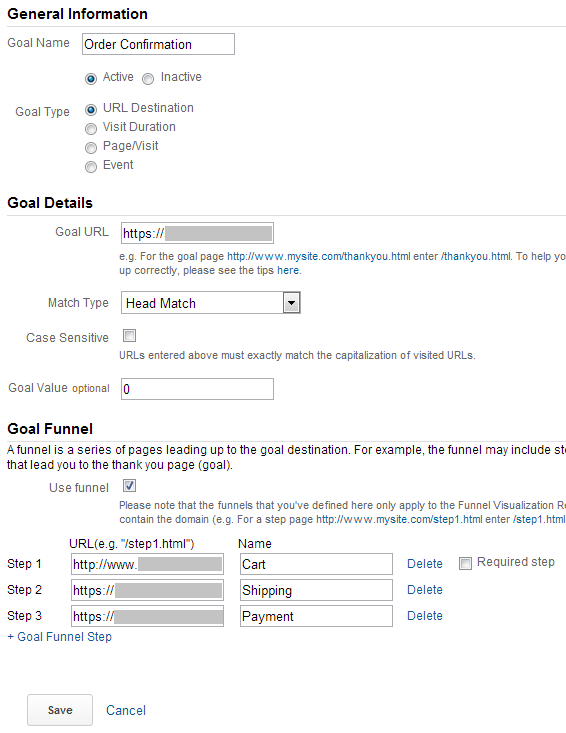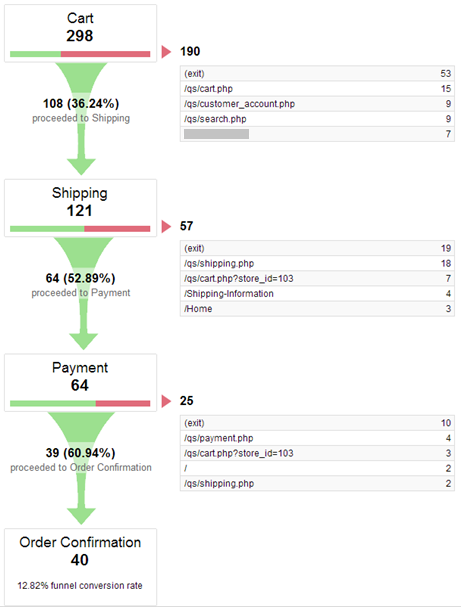Increase Your Conversion Rate Using Google Analytics Funnels

Conversions let you know whether a particular page on your website is doing its job. By creating a conversion funnel, you can determine whether other pages that are meant to drive conversions are doing their jobs, and at what points visitors are dropping out of the conversion process. You can use these insights to make changes to your site and increase your conversion rate. (Read related article: 4 Ways to Leverage Google Analytics to Improve SEO).
To begin tracking your conversion process, begin by setting up a conversion funnel:
-
Set up your goal.
In the Admin section of Google Analytics, select the website you want to create a conversion goal for, and under the Goals tab, click + Goal.
Choose a simple, descriptive name for your goal and then choose your goal type. In order to set up a conversion funnel, you must use a URL as your goal type. Examples of goal pages include an order receipt after a purchase has been made or a thank you page after someone downloads a file.
Enter your goal URL and, if desired, assign a value to the conversion. Next, check the “Use funnel” box to create your conversion funnel.

-
Define your funnel
Work backwards from your goal to determine what steps a customer must take to complete the conversion. Enter the URL for each step into the conversion funnel and assign a name to each step.
The first step in your funnel should be the page from which your customer would proceed directly to conversion, and not pages that may come before. For example, the first page in a sales conversion might be the “Review your cart” page. It wouldn’t be the product page where the customer added an item to their cart, since there are many places on the site that the customer may go from there. Once they have begun the checkout process by reviewing their cart, it’s time to begin tracking the conversion.
If you check the “Required step” box next to the first step, Google Analytics will only track conversions that came from that page and not those where customers entered into the funnel further down the line. This is useful if your goal is to track the effectiveness of the initial page.
When you have entered all the pages in your conversion process, click “Save”.
.

Once your conversion funnel has been active for awhile, you’ll have accrued some data that you can use to make improvements to the conversion process. View the funnel visualization report to see what the conversion rate for the entire funnel is and at what points visitors are dropping out of the conversion process.
In this example, we can see that less than 13% of potential customers are completing the sales process. For each step, we can see how many customers dropped off the site and where they went, which can help us to improve the sales funnel and convert more leads.
Many customers leave the site from the Cart page, so a possible approach to bring them back to the site would be to retarget them with a discount coupon to be used on their order.

Alternately, we could explore the page to see whether any elements on the page are driving them away. Perhaps this is the first place they see their sales total, including taxes? In that case, including tax in the display price or adding a sidebar that displays their cart total might help alleviate this issue.
From the Shipping page, we see that many customers leave to explore the Shipping Information. Including this information in a sidebar would help to keep those potential customers on the shipping page and prevent their being distracted from the sales process.
By tracking your conversion process using funnels, you can determine whether your web pages are working or not. Explore the places where leads are exiting your conversion funnels, and determine what distractions or pain points you can eliminate to make the process easier. In general, you will want to:
- Minimize the steps to conversion so that prospects don’t get bored or distracted.
- Minimize the amount of information and effort customers are required to provide.
- Use strong calls to action on each page of your funnel so that customers can easily tell what step to take next.
- Present information like tax and shipping costs or policy information upfront so that customers aren’t surprised by it partway through the conversion process.
Have more questions about conversion funnels or Google Analytics? Contact us or leave them in the comments. You should also check out our Google Analytics Training Course on our Digital Marketing Training Course page.
Read Google Universal Analytics – How to Upgrade & Why? to see why you should (or shouldn't) upgrade your Google Analytics to Universal Analytics.


